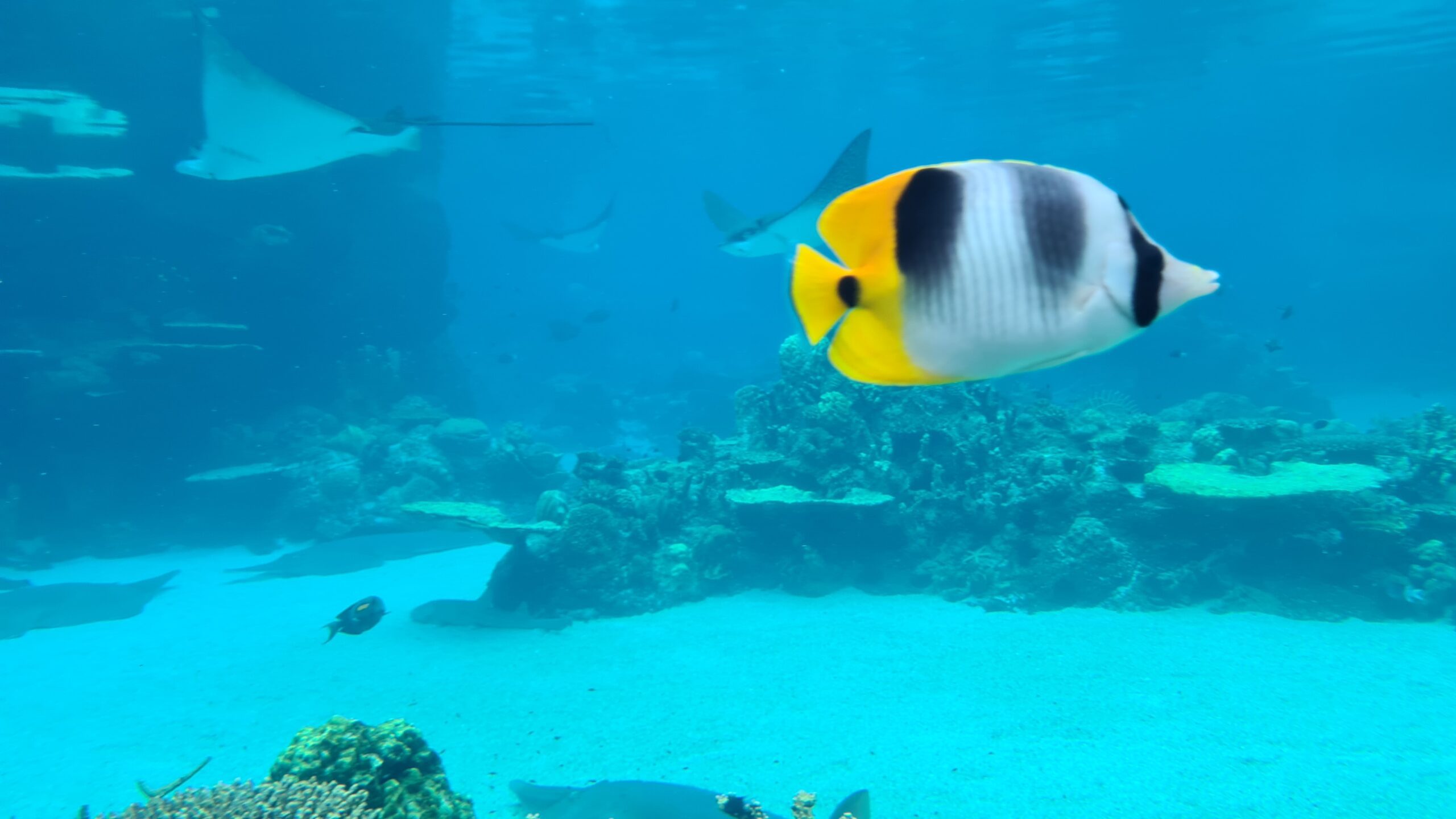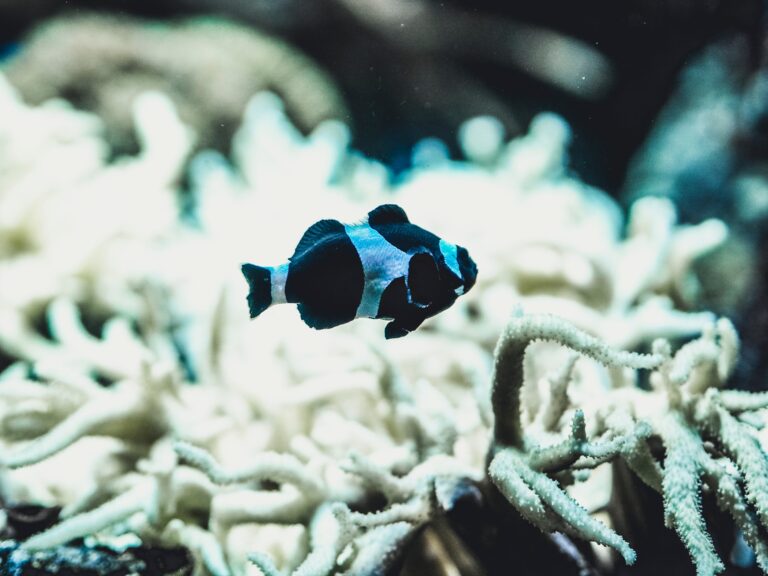Introduction
Embark on a journey across the vast expanses of our oceans, following the winged navigators of the sea – seabirds. These remarkable creatures, essential to the balance of marine ecosystems, traverse immense distances during their migrations. However, the very oceans they depend on are facing unprecedented challenges. In this exploration, we delve into the intricate relationship between ocean conservation and the critical migration routes of seabirds, examining the profound impact human activities have on these incredible journeys.
Threats to Seabird Populations: Pollution and Overfishing
Seabirds face numerous challenges during their migration routes, with pollution and overfishing emerging as major threats to their populations. Pollution, primarily in the form of plastic debris, oil spills, and chemical contaminants, poses a significant danger to seabirds. Plastic ingestion can harm their digestive systems, leading to malnutrition and even death. Oil spills have devastating effects on seabirds, causing feathers to lose their waterproofing abilities and leading to fatal consequences. Additionally, chemical pollutants in the ocean can disrupt the food chain, affecting the availability of prey for seabirds.
Overfishing exacerbates the challenges faced by seabirds, as it diminishes their primary food sources. Unsustainable fishing practices, such as bycatch and the depletion of key fish species, reduce the abundance of prey for seabirds. This scarcity of food can lead to population declines and affect the overall health and reproductive success of seabirds.
Impact of Climate Change on Ocean Conditions
Climate change has profound implications for the world’s oceans, influencing seabird migration routes and habitats. Rising sea temperatures, ocean acidification, and changes in currents significantly impact the distribution of prey species that seabirds rely on. Warming oceans affect the timing and availability of plankton, fish, and other marine organisms, disrupting the delicate balance of the marine ecosystem.
The altered ocean conditions also impact the migratory patterns of seabirds. Changes in sea surface temperatures can influence the timing of migrations and the locations where seabirds find optimal foraging grounds. These shifts in migration patterns may lead to increased competition for resources among different seabird species, further straining their populations.
Altered Migration Patterns Due to Human-Induced Changes
Human-induced changes, such as habitat destruction and coastal development, play a crucial role in altering seabird migration patterns. Destruction of breeding grounds and nesting sites due to urbanization and industrial activities force seabirds to adapt their migration routes and behaviors. Light pollution along coastal areas can disorient seabirds, affecting their ability to navigate and locate suitable habitats.
Furthermore, the construction of wind farms and other structures at sea can disrupt traditional migratory pathways. These obstacles may pose collision risks for seabirds and impact their ability to find suitable rest and feeding spots during their long journeys.
In conclusion, the threats to seabird populations during migration routes are multifaceted, involving pollution, overfishing, climate change, and human-induced alterations to their habitats. Addressing these challenges requires a comprehensive and collaborative effort to ensure the conservation of these vital marine species.
The Crucial Connection: Ocean Conservation and Seabird Routes
The intricate dance between ocean health and the well-being of seabird populations unfolds as a crucial narrative in the tapestry of our planet’s ecosystems. Seabirds, ranging from albatrosses to puffins, are not only captivating creatures but also integral indicators of the oceans’ overall health. As ocean conservation efforts intensify, understanding the symbiotic relationship between healthy oceans and thriving seabird populations becomes paramount.
Seabirds, often regarded as the sentinels of the sea, rely on the abundance and diversity of marine life for their sustenance. Healthy oceans provide a robust foundation of fish and other marine organisms, ensuring an adequate and nutritious diet for these avian travelers. Conversely, seabirds contribute to ocean health by acting as natural fertilizers, depositing nutrient-rich guano that enhances the productivity of marine ecosystems.
Exploring the Symbiotic Relationship
Delving into the intricacies of this symbiotic relationship reveals the interconnectedness of the marine and avian worlds. The conservation of one inevitably supports the prosperity of the other. Protecting critical marine habitats, regulating overfishing, and minimizing pollution not only benefit the oceans but also safeguard the foraging grounds and breeding sites crucial for seabird survival.
As we navigate the challenges of climate change and habitat degradation, recognizing the pivotal connection between ocean conservation and seabird routes becomes a call to action. Conservation initiatives worldwide are steering efforts towards preserving these delicate ecosystems, recognizing the holistic approach required to sustain both oceanic biodiversity and seabird populations.
Highlighting Successful Conservation Initiatives
Around the globe, inspiring success stories underscore the positive impact of concerted conservation initiatives on seabird populations. From the implementation of marine protected areas to the enforcement of sustainable fishing practices, these efforts showcase the tangible results of collective action.
In regions like the Galápagos Islands and New Zealand, dedicated conservation programs have led to the recovery of seabird species on the brink of extinction. By creating safe havens and addressing the root causes of population decline, these initiatives exemplify the effectiveness of combining scientific research, policy advocacy, and community engagement in preserving seabird habitats.
Case Studies Demonstrating Positive Impact
Case studies offer compelling evidence of the transformative power of conservation efforts on seabird migration routes. Tracking the recovery of albatross populations in the Southern Ocean or the rebound of puffin colonies in the North Atlantic illuminates the tangible benefits of strategic conservation planning.
As we navigate the dynamic landscapes of ocean conservation and seabird routes, it becomes clear that the health of one is inseparable from the prosperity of the other. Through informed and collaborative efforts, we can foster a future where both oceans and seabirds thrive in harmony, ensuring the resilience and sustainability of our planet’s diverse ecosystems.

Introduction to Modern Tracking Technologies in Seabird Research
In recent years, technological advancements have revolutionized the field of seabird research, enabling scientists to gather unprecedented insights into the behavior and movements of these fascinating avian species. Sophisticated tracking technologies have emerged as powerful tools, allowing researchers to monitor seabirds in their natural habitats with unprecedented precision. GPS trackers, satellite tags, and geolocators have become integral components of seabird studies, providing invaluable data that contributes to a deeper understanding of their ecology and behavior.
Understanding Migration Routes Through Tracking Data
One of the key benefits of modern tracking technologies is their ability to unveil the mysteries of seabird migration. Seabirds, known for their remarkable long-distance journeys, often travel thousands of kilometers across oceans. Tracking devices equipped with GPS and satellite communication allow scientists to monitor these journeys in real-time, uncovering crucial information about migration routes, stopover locations, and seasonal patterns. By analyzing this tracking data, researchers gain insights into the factors influencing migration, such as environmental conditions, feeding grounds, and breeding sites.
Showcasing Success Stories in Conservation Strategies
The integration of technology into seabird research has not only expanded our knowledge but has also contributed significantly to conservation efforts. Success stories abound where tracking data has directly influenced conservation strategies. For instance, by identifying critical feeding areas and migration corridors, conservationists can advocate for the protection of these specific zones, aiding in the establishment of marine protected areas. Additionally, tracking data can pinpoint threats faced by seabirds, such as interactions with fishing gear or changes in climate patterns, prompting targeted conservation initiatives to mitigate these risks.
Global Collaboration for Sustainable Oceans:
In the face of escalating environmental challenges, global collaboration is paramount for the sustainable future of our oceans. The interconnected nature of marine ecosystems demands collective efforts to address issues such as overfishing, plastic pollution, and climate change. International cooperation not only fosters knowledge-sharing and resource pooling but also enables the formulation of comprehensive strategies to safeguard our oceans. Organizations, governments, and communities worldwide must unite to create effective policies and initiatives that transcend borders, ensuring the health and resilience of our shared marine environments.
Emphasizing the Need for International Cooperation in Ocean Conservation:
International cooperation is a linchpin in the ongoing battle for ocean conservation. By fostering collaborations between nations, we can create a unified front against threats to marine ecosystems. This involves sharing scientific research, implementing joint conservation projects, and establishing international agreements to regulate activities that impact the oceans. The preservation of biodiversity and the mitigation of climate change effects on the seas require a coordinated effort on a global scale. Only through shared responsibility and joint action can we hope to secure a sustainable future for our oceans.
Discussing the Role of Policies and Regulations in Protecting Seabird Habitats:
Policies and regulations play a pivotal role in safeguarding the habitats of seabirds, which are integral components of marine ecosystems. Governments must enact and enforce legislation that protects these vital areas, ensuring the conservation of breeding grounds, feeding sites, and migration routes. Specific measures may include establishing marine protected areas, setting fishing quotas, and regulating shipping activities in sensitive seabird habitats. By implementing stringent policies, we can create a framework that promotes responsible stewardship of our oceans and preserves the delicate balance of seabird ecosystems.
Encouraging Individual Actions to Contribute to Ocean Health:
While international collaboration and governmental policies are crucial, individual actions also play a significant role in maintaining ocean health. Each person can contribute to the well-being of the seas through simple yet impactful measures. These include reducing single-use plastic consumption, making sustainable seafood choices, and participating in beach clean-ups. By raising awareness about the interconnectedness of human activities and ocean health, individuals can become stewards of change in their communities. The cumulative effect of these small actions can lead to a substantial positive impact on the overall health of our oceans.
Video Credit: Be Brave To Act
FAQs
Q. How do ocean currents affect seabird migration?
A. Ocean currents influence seabird migration by providing wind support and helping birds cover vast distances efficiently.
Q. Are there specific seabird species particularly affected by pollution?
A. Yes, species like albatrosses and puffins are vulnerable to pollution, affecting their health, reproductive success, and migration routes.
Q. How can individuals contribute to seabird conservation?
A. Individuals can contribute by supporting marine conservation organizations, participating in beach clean-ups, and advocating for policies that protect seabird habitats.
Q. Are there international agreements addressing seabird conservation?
A. Yes, agreements like the Agreement on the Conservation of Albatrosses and Petrels (ACAP) aim to coordinate international efforts to conserve seabirds and their habitats.
Q. Can climate change completely alter seabird migration routes?
A. Yes, climate change can lead to shifts in seabird habitats and migration patterns, potentially causing some species to adapt by altering their traditional routes.
Q. How do marine protected areas benefit both seabirds and ocean conservation?
A. Marine protected areas provide safe habitats for seabirds, promoting biodiversity and contributing to the overall health of marine ecosystems.



